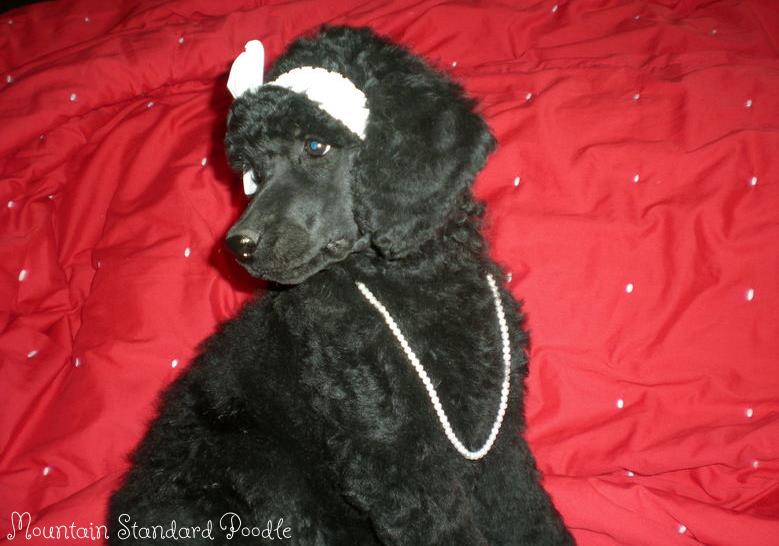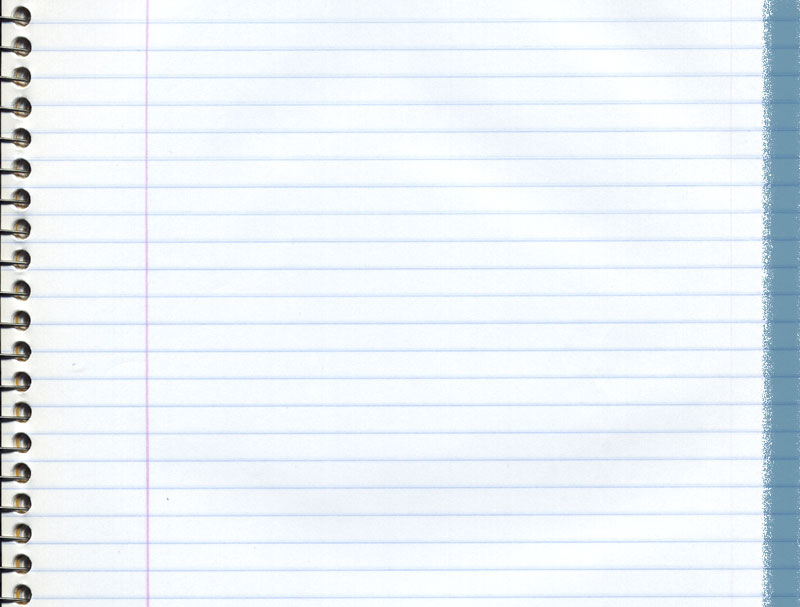TIPS
Mountain Standard Poodle
Mountain Standard Poodle
Mountain Standard Poodle

Click here to see our photo album


Check out our Puppy gear page for all your puppy needs
Check out our puppy gear page for all your puppy needs.
Crate Training at Night
The idea behind crate training is based on the dog's instinct to not go potty where they sleep.
Items you will need:
-Crate, with a divider
-Blankets or padding (couple changes)
-Paper towels (lots!)
-Cleaner with enzymes
-Baby monitor/camera (optional)
-Lots of patience (required!!)
Basically what you do is create a space for the pup to not want to potty in and let the pup out when he needs it. Pretty simple.
To do this, set the crate up with the bedding, but using the divider, only give enough room for him to lay comfortably and turn around in. You want the pup to have enough room to be comfortable but you don't want extra room. If there is extra room he will go into a corner, potty, and then go to the opposite side to sleep.
Be sure to watch the puppy's growth. Sometimes pups can grow very quickly, so move the divider to make a bigger area when he outgrows the area you have provided.
When crate training a puppy, it is important to keep his crate near enough to your sleeping area so you can hear him if he wakes up in the night. It is also a good idea to keep him near the outside door, because in the beginning, he will probably start going as soon as he is out of the crate. For large homes, a baby monitor or camera is a great idea so the pup can be near the door and go out immediately but you can still hear or see him whining from your bed.
Always get up in the night if you hear your pup. You don't want to set his training back by not giving him the opportunity to go out.
Sometimes a puppy will get into the habit of waking up in the night just to go out and play. To try to prevent this before it happens, we usually watch the puppy very closely and when he has done #1 and #2 we quickly bring him back in. Or if it seems like he is done, bring him in.
If he does have an accident in the night be patient, he's a baby and is still learning. Tell him no and take him outside, praise him if he does potty outside. Clean the crate with a good cleaner, with an enzyme made for accidents. Also change the bedding. If you leave anything that smells like potty, he thinks that is an ok place to go and will continue to go there.
Be sure to let him out very last thing before you go to bed and very first thing in the morning.
Never make the crate a time out spot or a place for punishment. Allow him to go into his crate anytime he wants, sometimes pups just need some quiet time.
The idea behind crate training is based on the dog's instinct to not go potty where they sleep.
Items you will need:
-Crate, with a divider
-Blankets or padding (couple changes)
-Paper towels (lots!)
-Cleaner with enzymes
-Baby monitor/camera (optional)
-Lots of patience (required!!)
Basically what you do is create a space for the pup to not want to potty in and let the pup out when he needs it. Pretty simple.
To do this, set the crate up with the bedding, but using the divider, only give enough room for him to lay comfortably and turn around in. You want the pup to have enough room to be comfortable but you don't want extra room. If there is extra room he will go into a corner, potty, and then go to the opposite side to sleep.
Be sure to watch the puppy's growth. Sometimes pups can grow very quickly, so move the divider to make a bigger area when he outgrows the area you have provided.
When crate training a puppy, it is important to keep his crate near enough to your sleeping area so you can hear him if he wakes up in the night. It is also a good idea to keep him near the outside door, because in the beginning, he will probably start going as soon as he is out of the crate. For large homes, a baby monitor or camera is a great idea so the pup can be near the door and go out immediately but you can still hear or see him whining from your bed.
Always get up in the night if you hear your pup. You don't want to set his training back by not giving him the opportunity to go out.
Sometimes a puppy will get into the habit of waking up in the night just to go out and play. To try to prevent this before it happens, we usually watch the puppy very closely and when he has done #1 and #2 we quickly bring him back in. Or if it seems like he is done, bring him in.
If he does have an accident in the night be patient, he's a baby and is still learning. Tell him no and take him outside, praise him if he does potty outside. Clean the crate with a good cleaner, with an enzyme made for accidents. Also change the bedding. If you leave anything that smells like potty, he thinks that is an ok place to go and will continue to go there.
Be sure to let him out very last thing before you go to bed and very first thing in the morning.
Never make the crate a time out spot or a place for punishment. Allow him to go into his crate anytime he wants, sometimes pups just need some quiet time.
Eating and Diet
It is important to make sure your dog always has access to fresh clean water. Be sure to wash the food and water dishes out regularly.
Never feed your puppy chocolate or onions. Also never feed your pet cooked bones. They can splinter and get caught in their digestion.
Unfortunately, along with horses, cattle and several other breeds of dogs, poodles are a breed that has a potential to develop bloat. Bloat is a rare condition but it does happen and when it does, it is serious. It is a condition where the stomach fills with gas and usually ends up turning or twisting and requires immediate medical attention. No one knows for sure what causes bloat, but there are some things found in a study by Purdue University that can help reduce the risk of it:
1. It was previously thought that if the dog's bowl was higher-on a stand, etc, it would reduce the risk of bloat-it has now been found that feeding them on a raised dish actually increases the risk of bloat. So don't elevate the food dish!
2. If the dry dog food you give your dog contains citric acid-DO NOT moisten it, as this can increase the risk.
3. If your dog is a fast eater, slow it down. There are several ways to help slow the eating down. There are bowls you can buy that are supposed to help. The idea is to cause the dog to eat around something, which slows the eating down. Some people get creative and DIY their own solutions, if you choose this route PLEASE make sure your dog can't chew up or choke on whatever you use.
If you have multiple animals make sure they have their own bowl and are far enough away from the other animals. Stressful eating situations, such as competing to get the food, can contribute. Some find free feeding to be a good solution with multiple dogs so they always have access and aren't competing.
It is important to make sure your dog always has access to fresh clean water. Be sure to wash the food and water dishes out regularly.
Never feed your puppy chocolate or onions. Also never feed your pet cooked bones. They can splinter and get caught in their digestion.
Unfortunately, along with horses, cattle and several other breeds of dogs, poodles are a breed that has a potential to develop bloat. Bloat is a rare condition but it does happen and when it does, it is serious. It is a condition where the stomach fills with gas and usually ends up turning or twisting and requires immediate medical attention. No one knows for sure what causes bloat, but there are some things found in a study by Purdue University that can help reduce the risk of it:
1. It was previously thought that if the dog's bowl was higher-on a stand, etc, it would reduce the risk of bloat-it has now been found that feeding them on a raised dish actually increases the risk of bloat. So don't elevate the food dish!
2. If the dry dog food you give your dog contains citric acid-DO NOT moisten it, as this can increase the risk.
3. If your dog is a fast eater, slow it down. There are several ways to help slow the eating down. There are bowls you can buy that are supposed to help. The idea is to cause the dog to eat around something, which slows the eating down. Some people get creative and DIY their own solutions, if you choose this route PLEASE make sure your dog can't chew up or choke on whatever you use.
If you have multiple animals make sure they have their own bowl and are far enough away from the other animals. Stressful eating situations, such as competing to get the food, can contribute. Some find free feeding to be a good solution with multiple dogs so they always have access and aren't competing.
Bringing Puppy Home
If you will be bringing the puppy home by yourself or traveling a long distance with your puppy, it may be a good idea to put your puppy in a crate. That way you won't be distracted by the puppy, who may be excited or confused or may even have to potty.
If someone (a passenger) will be holding the puppy on the way home it could be a good idea to keep your new puppy on a leash, just in case your little one jumps out of the car as soon as you open the door. He won’t know where he is and could get lost or run into the street and get hurt. Just be sure to watch the puppy so he doesn't chew the leash up or get strangled by it.
As soon as you get home, immediately take the puppy to the area in the yard you want her to learn to potty in and let her go. Be sure to give lots of praise when your puppy does go, so she knows that is an acceptable place to go.
Be sure to check out our puppy gear pagefor all your puppy needs.
10 Must Haves For Your New Pup
1.
2.
3.
4.
5.
6.
7.
8.
9.
10.
1.
2.
3.
4.
5.
6.
7.
8.
9.
10.

“We are a participant in the Amazon Services LLC Associates Program, an affiliate advertising program designed to provide a means for us to earn fees by linking to Amazon.com and affiliated sites.”
Check out our new blog!